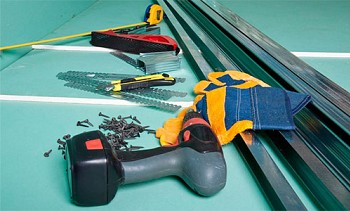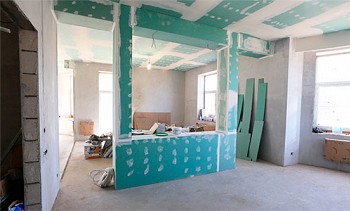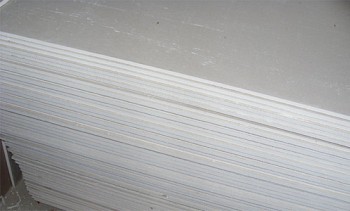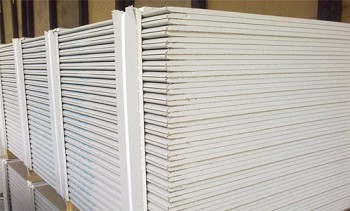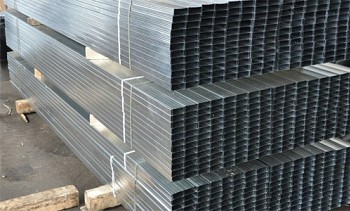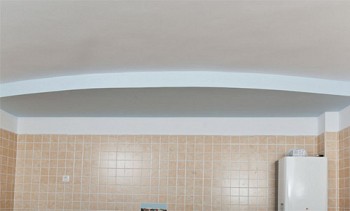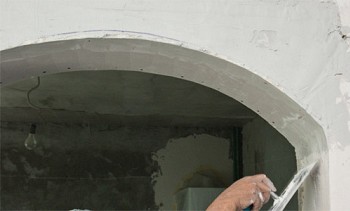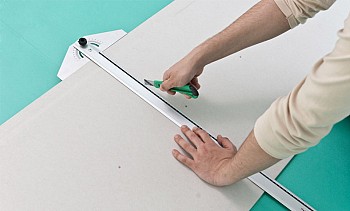Gypsum fiber sheets (gypsum plasterboard) and gypsum plasterboard sheets (gypsum plasterboard) are today widely used both for leveling walls and for decorating and creating partitions indoors. Materials have common advantages - this is a simple installation and processing process, the ability to level any surfaces, the permissibility of using any decorative compositions and coatings, as well as an affordable price. However, there are serious differences between them, which determine the peculiarities of the use of plates during repair. A detailed comparison of the characteristics and features of each material will help to understand what is best - gypsum fiber or drywall - for one or another type of work.
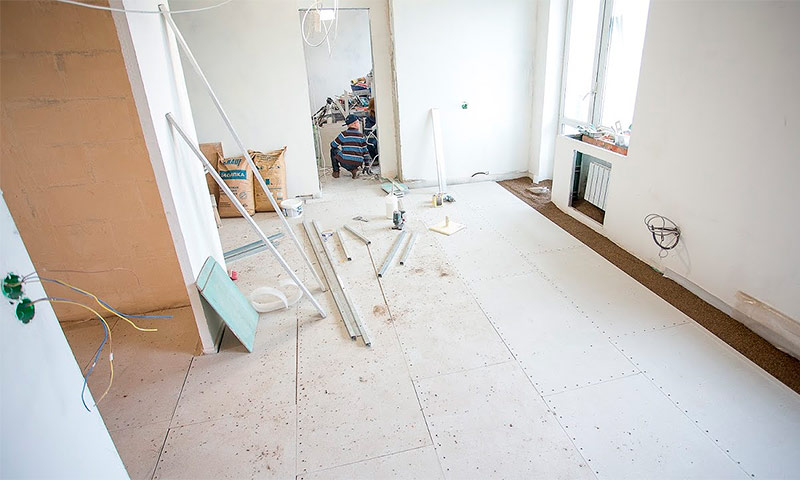
Content:
Composition and structure of gypsum plasterboard GKL
Gypsum plasterboard is a very simple structure - a kind of thick cardboard sandwich, between which there is a gypsum mixture with special additives to increase strength. Such a design provides the material with lightness, environmental friendliness, rather high flexural strength and thermal insulation properties.

To improve the quality characteristics of GCR, various components can be added to its composition.
Today the following types of drywall sheets are distinguished:
Conventional Plasterboard Sheets (GCR). They are distinguished by gray color of cardboard with blue marking. They are used for finishing work in rooms with high and normal humidity.
Moisture-resistant drywall (GKLV). Drywall treated with special impregnation, while adding antifungal compounds and hydroprotective agents to the gypsum mixture itself, can not only absorb 10 times less moisture than ordinary GCR, but also quickly removes moisture that has got inside. The sheets of such drywall are green on both sides, the marking is put in blue.
Refractory drywall (GKLO). To increase the resistance to an open flame, gypsum plasterboards are impregnated with special flame retardants, and in some cases, crystallized water is added to the plaster “filling” of the sheet in a special way. Such additives give the material high heat resistance - the limit of sheet resistance to open fire can be up to 60 minutes. GKLO sheets are pink; markings are bright red.
Moisture-resistant drywall with increased resistance to fire (GKLVO). Special water-repellent components and flame retardants allow the material to combine waterproof properties with the ability to withstand the effects of flame for a long time. The sheets are green with red markings.

Attention! Externally, the GKLV and GKLVO plates differ from each other only in marking, so when buying, make sure that you choose the material that is required!
Composition and structure of gypsum fiber sheet GVL
The difference between gypsum fiber and drywall lies in the composition of the materials. The GVL board consists of a homogeneous mixture of loose cellulose fibers with gypsum, which is pressed by a special technology, if necessary reinforced with fiberglass, and then cut and ground to a smooth surface. The composition provides the material with increased density and improved performance.
Gypsum fiber itself is characterized by high fire resistance - the structure of GVL boards excludes any possibility of ignition. Therefore, the material is available in two forms - ordinary and moisture resistant.GVL sheets are gray and blue marked with the type of material (normal or moisture resistant) and dimensions on the back side.

Comparison of the technical characteristics of drywall and gypsum fiber
The rationality of using GCR and GVL is determined by the features and operational characteristics of the materials. Knowing the difference between gypsum fiber and drywall in basic parameters, you can determine how reasonable it is to apply one or another option during the repair work.
Density
The density of gypsum plaster, irrespective of waterproof and thermal protection components, is approximately 850 kg / m2. In this parameter, gypsum fiber significantly exceeds gypsum board - an average density of 1200 kg / m2, which is equivalent to expanded clay concrete. Due to the homogeneous and dense structure, nails can be driven into the GVL sheet and screws can be screwed in without the use of dowels, as is the case with drywall. At the same time, the metalware installed in the GVL can withstand a 30-kilogram load.
Strength
Gypsum fiber sheets are more durable than drywall. This is achieved primarily due to the higher density of GVL. This defines the scope of these materials. Gypsum plasterboard sheets are used for cladding light structures - partitions, suspended ceilings, wall cladding at home. Gypsum fiber sheets have increased strength, which allows them to be used in industrial facilities and in rooms where higher loads can be exerted on the walls. The bending strength of GVL is more than 5.5 MPa, GCR does not reach this value.
Flexibility
When wetted, gypsum plaster softens somewhat and acquires a certain flexibility, which makes it possible to produce arches, curly ceilings and radius structures for interior decoration. Plasterboard plates are characterized by unchanging stiffness, it is almost impossible to bend them without breaking, and therefore they are used exclusively for finishing and building linear structures.

The complexity of mounting and processing sheets
Features of installation and processing of drywall and gypsum fiber for some parameters are shown in the table below:
| Parameter | GKL | GVL |
|---|---|---|
| Partition device | On a metal or wooden frame according to the technology generally accepted for gypsum products. | On a metal or wooden frame according to the technology generally accepted for gypsum products. |
| Cutting | It can be cut with a knife, cutting the top layer of cardboard and breaking the gypsum core. | It cannot be cut with a knife; sawing is necessary. |
| Mount | Screws type TN or TB, as usual, for gypsum products, technology. | With screws of type TN, as usual, for gypsum products, technology. |
| Seam processing | Each seam must be covered with reinforcing tape followed by puttying with a special mixture. | The use of reinforcing tape and preliminary putty at the joints is not required. |
| Corner processing (internal and external) | A reinforcing tape is required to create an ideal inner corner, and special metal corners are required for the outer corners. | It does not require the use of special corners and mesh. |
| Surface treatment before painting | Putty coating is required followed by priming. | Putty of only joints of sheets and subsequent priming is possible. |
| Painting | The use of paints and whitewash on a silicon basis is unacceptable. | It is possible to use any whitewash and coloring compounds. |
| Preparing for wallpapering | It is necessary to apply a primer for wallpaper. When removing wallpaper, there is a high risk of damaging the surface of the GCR. | Primer is optional. GKL surface maintains its integrity even after wallpaper removal. |
Environmental friendliness
In this case, it is extremely difficult to determine which is better - GVL or drywall. Both materials are environmentally friendly and do not contain toxic components.
Flammability
Drywall is characterized by a certain heat resistance - even an ordinary sheet is able to withstand about 25 minutes of open fire before the start of destruction, while the cardboard surface is carbonized. Some manufacturers use special flame retardants for sheet impregnation, so that the GKL fire resistance increases to 60 minutes. The composition of the gypsum fiber eliminates any possibility of fire, and therefore it is safer. However, both of these materials are assigned to the flammability group G1.
Material weight
The standard size of the gypsum fiber sheet is 2500X1200 mm. Such a sheet, depending on the thickness, can weigh from 39 to 42 kg. Drywall is much lighter - the weight of a plate of the same size and the largest thickness is 33 kg, which makes carrying and working with the material a little easier, and the weight of the manufactured structures is less.
The final comparison of materials
 |  | |||||||
|---|---|---|---|---|---|---|---|---|
| GKL | GVL | |||||||
| Density, kg / m3 | 850 | 1250 | ||||||
| Strength | below | higher | ||||||
| Thermal conductivity, W / (m * K) | 0,1 - 0,2 | 0,22 - 0,35 | ||||||
| Bending Strength, MPa | less than 5.5 | more than 5.5 | ||||||
| Sound insulation level, dB | 27 - 30 | 30 - 35 | ||||||
| Combustibility class | G1 - low combustible | G1 - low combustible | ||||||
| Weight | easier | heavier | ||||||
| Environmental friendliness | high | high | ||||||
Where is it better to use drywall and gypsum fiber
Differences in the characteristics of GCR and GVL make you think about which material is better to use when repairing. The choice will depend on the type of finishing work and the characteristics of a particular room.
Wall cladding
Deciding what to choose - drywall or gypsum plasterboard on the walls - it is worth focusing on the degree of load on the wall, the complexity of the design and the microclimate in the room. In apartments and residential buildings, the use of conventional is quite acceptable, and in bathrooms - moisture-proof drywall. It is much easier to work, and is quite capable of withstanding such an intensity of operation.

Gypsum-fiber sheets are suitable for wall cladding in industrial facilities, in places with high humidity, as well as in rooms where high mechanical loads are provided - for example, fastening of heavy equipment.
Ceiling lining
The use of drywall for hemming the ceiling allows you to create complex structures and curved elements. When using gypsum sheets, the entire structure will have a significantly greater weight. At the same time, there is no way to make curved elements, and the process of decorating the ceiling is more complicated. But in the case of using GVL for filing the ceiling, you can get much better sound insulation and protection against penetration of steam.

Floor covering
To level the floor under the flooring, only gypsum boards can be used - the stiffness of the material and its high bending and compression strength ensure resistance to severe loads. GCR indicators according to these parameters are much lower, they are more fragile, and therefore are not used for finishing floors.

Wet rooms
For small, well-heated bathrooms, plasterboard can be used. However, if you need a durable and reliable finish, which is not afraid of high humidity, the advantage will be on the side of gypsum sheets. The expansion coefficient of GVL does not exceed 1.5%, therefore, the joint seams remain smooth and tight even with prolonged exposure to moisture.
Drywall and gypsum fiber have a lot in common - both materials are environmentally friendly, affordable and quite simple to install. However, when planning a repair, it is worth considering the flexibility and lightness of GCR and the high mechanical strength, density and fire resistance of GVL - and when choosing, focus on the features of the room and the ultimate goal of finishing work.

